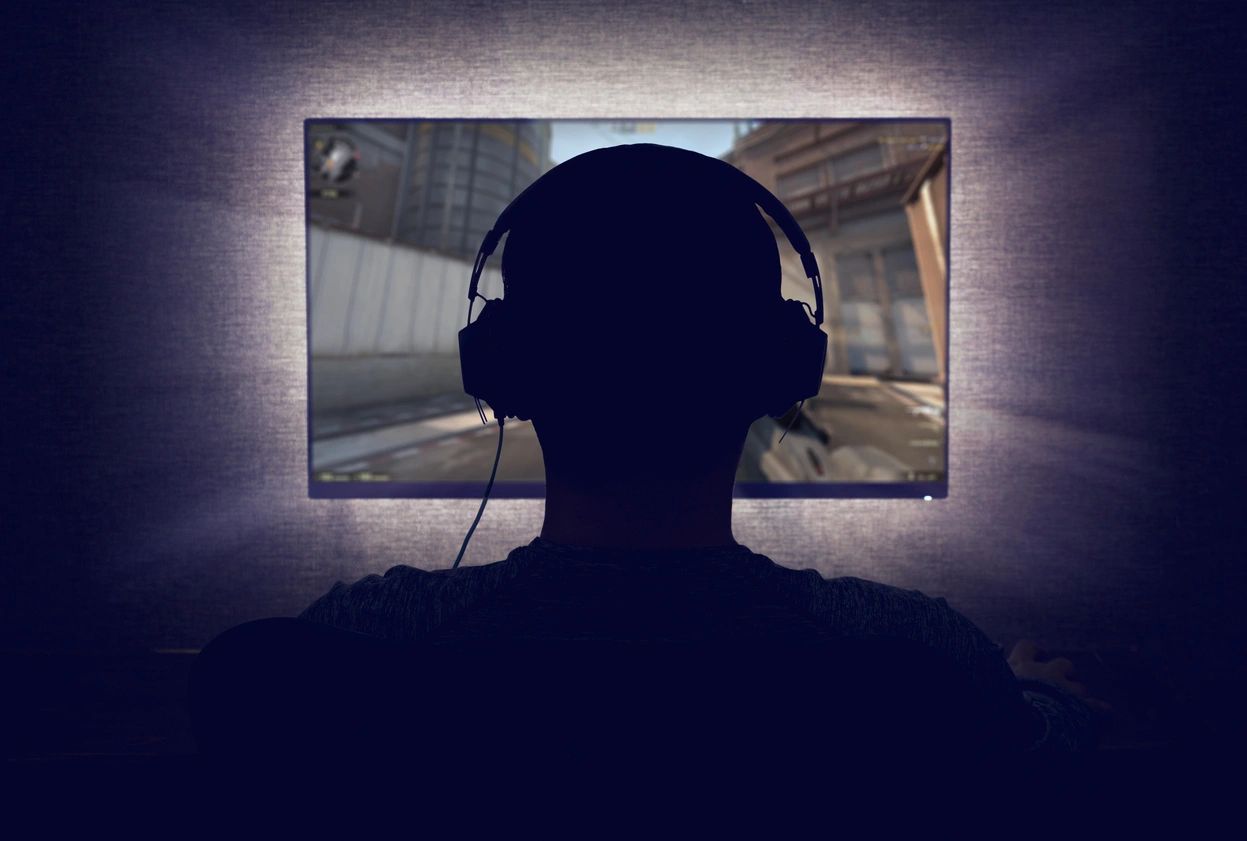Features that enhance your state of immersion
The core loop in video games serves as the central gameplay experience that keeps players engaged and immersed in their worlds. A standout example of a captivating core loop is the attention grabber the “Ferris wheel” if you would, which entices gamers with its addictive gameplay mechanic. Players are presented with a unique abilities, to advance themselves in the game. Or a new item slot to gear up. Whether it’s snatching power-ups, constantly mowing down enemies, solving puzzles, or earning loot. These core loops create a sense of urgency and mastery, as players refine their skills and discover new ways to interact with the game environment. The constant reward of successfully getting new loot at better grades, or unlocking a new area, sometimes even just simply beating a boss a player was stock on for hours fuels a cycle of satisfaction and motivates players to keep pushing forward. Hench the loop, “Ferris wheel”.
We as players need to prove we are getting better, or strive to chase that feeling of satisfaction once a level is beat or item is acquired. With its engaging and interactive gameplay, the core loop serves as a driving force, ensuring that gamers stay immersed and devoted to the game for hours if not days on end.
This also serves to prove that sometimes making whole new games isnt quite worth it to the game developers. Rather simply to improve on the core loop mechanics. We can see many great examples of this like in Destiny 2 where its been almost 6 years since the game has been released. Or League of Legends since 2009 no major updates other than some minor games modes but constant characters developments are released to entice new spicy gameplay. A deeper example being World of Warcraft where its been in service since early 2004 nearly 20 years of great core loop mechanic design. Though it has many Expansion releases the core game itself of leveling up getting gear and either grinding dungeons/raids or engaging in PvP is where the game shines the most.
Role-playing in video games offers players a unique opportunity to immerse themselves even deeper into the video game world. By assuming the role of the players custom made character or one that is made already, gamers can step into the shoes of their alter ego or E-persona, exploring vast landscapes and engaging in epic adventures. Interacting in the world without consequences or without the remorse one would get in the “real” world. This immersive experience is heightened by the freedom to make choices that impact the narrative and shape the destiny of their character. As players progress through the game, they develop a deeper connection with their virtual persona, investing emotionally in their triumphs and setbacks or in the lore of the video game.
The ability to customize the character’s appearance, abilities, and personality further enhances the sense of ownership and investment. Through role-playing, players can escape the constraints of reality, becoming engrossed in the game’s rich lore, interacting with diverse NPCs, and forging meaningful relationships within the world of games. Though it may sound fictional to some but some connections even love have already been made on a deeper level online that in person. This interactive storytelling experience fosters a profound sense of immersion, allowing players to temporarily inhabit a world where their actions carry weight and their presence matters, ultimately creating an unforgettable and deeply engaging gaming experience.
This all in mind to give the players and those around us experiencing this to really question what is the “real” world. Our video game worlds tend to have more meaningful interactions in them and what matters most is you can always be yourself, ask yourself is that not “real”. A thought provoking quote to really ponder. Yet one of the main themes of the book is to escape reality…
“I realized, as terrifying and painful as reality can be, it’s also the only place where you can find true happiness. Because reality is real.” – Ernest Cline, Ready Player One (364)
Team games provide a unique and immersive experience in the world of video games. By bringing players together to collaborate towards a common goal, they can even create a sense of camaraderie and shared accomplishment. The synergy that arises from teamwork adds a whole new layer of immersion, as players must communicate, strategize, and coordinate their actions in real time to achieve a goal. Whether it’s coordinating attacks in a first-person shooters or orchestrating complex maneuvers in a multiplayer strategy game, running around screaming for back up or that you are about to “die” the need for teamwork enhances the gameplay and fosters a deep sense of engagement.
The social aspect of team games further contributes to immersion, as players connect with others, forge friendships, and get in touch with tight-knit communities. Its amazing reading about friends finally meeting in person after meeting online over a decade ago. Or going to a social gathering like CON with the Guild you Raided with for years.
The ability to rely on teammates and witness their unique contributions enhances the overall experience, making team games a thrilling and captivating form of interactive entertainment. We often say you are only as strong as your weakest link, online team interactions lets us know and pick up the slack in team games, so that the gameplay is seamless like clock work. Going for hours on end without missing a beat.
Yet with one stark contrast in all of this, are those who prefer to play alone. Most of the the time we can see teammates as holding us back, or wanting to play at your own pace. This can all be true to varying degree’s but then it comes down to those lone wolfs carrying the team or showing them how its done eventually leading to some sort of team play.
Having different computer setups can greatly enhance your level of immersion in various activities. With a powerful gaming rig equipped with high-end graphics cards, processors, and a 2K/4K resolution monitor, you can immerse yourself in the visually stunning worlds of video games, feeling every detail and experiencing breathtaking landscapes as if you were truly there. A multi-monitor setup seems to be the standard, this provides a wider field of view, allowing for a more encompassing experience whether you’re gaming, working with complex software, or simply browsing the web. By personally experience typically the game runs on the main monitor and then discord or Spotify is on the secondary monitor, which typically is a hand me down or older monitor. Of course ideally both monitors would be the same of course.
The investment into a quality sound system or high-quality headphones can further enhance immersion by enveloping you in rich, detailed audio, immersing you in the soundscape of movies, music, or virtual environments. Though having said this in greater detail it is a highly technical aspect to get into. For one thing the player/ user has to first look at the sound chip/card that is installed in the motherboard. This enables all of the processing for input and output going into the sound system. Lets say everyone has a performance grade regular retail chip. Moving from that it then depends on what game you are playing and then what engine the game is made on. For instance UE5’s sound design is intense to say the least. So if you pair that with a good quality headset, and our “basic” sound chips, you should be mostly fine, and hear everything everyone else does, a “level” playing field. Going further beyond from there you are getting into Audiophile territory where thousands of dollars are spent for audio alone.
Additionally, accessories like VR headsets, RGB lighting, and a solid chair can transport you to entirely new realms, enabling you to physically interact with virtual objects and characters, resulting in an unprecedented level of immersion. Having interactive lighting with keyboards and surrounding ambient lights will take over your senses and have you enthralled in the game. With surround sound and lights that react to the game around you, sitting deep in your chair, the phrase of “you feel” like your there will be a common thing to say coming from your experience. Ultimately, the right computer setup for each users comfortability can transform your digital experiences into something truly immersive and captivating, allowing you to escape into another reality and dive into a world of endless possibilities.
With everything talked about above meet with a certain degree of success, one can enter “flow state” much easier. Flow state, also known as being “in the zone,” refers to a state of optimal performance and immersion in an activity, but in this instance we are talking about Gaming. It was originally described by psychologist Mihaly Csikszentmihalyi ” …It was suggested that an optimal flow state was created when people tackle challenges that they perceived to be at just the right level of ‘stretch’ for their skills” PositivePsychology.com March 9th 2023 accessed 05 June 2023, <https://positivepsychology.com/mihaly-csikszentmihalyi-father-of-flow/#flow-types-characteristics> in the context of various activities, too include gaming. He describes it as a state in which people are so involved in an activity or task even, that nothing else seems to matter, almost to be hyperfocused on the event at hand.
When a person is in a flow state while gaming, they experience deep concentration, complete absorption in the game, and a sense of effortless control. Time always seems to pass quickly what we may think only a couple hours would be turns into 6 or more. Typically the individual becomes fully engaged in the activity, losing self-awareness and experiencing a heightened sense of focus. In this state, players often perform at their best, making quick decisions, reacting instinctively, and achieving a sense of satisfaction and enjoyment. Not overthinking decisions and in general being able to make them if that was something the user struggled with.
Flow state in gaming typically occurs when the challenge level of the game matches the player’s skill level. If the game is too easy, players may become bored and disengaged, this more often than not happens in competitive games like shooters, or MOBA’s. On the other hand, if the game is too difficult, they may become frustrated and overwhelmed. Prime example being games coming out of FromSoftware. Achieving a balance between challenge and skill is essential for entering the flow state. Where you can easily “sweat” but also are getting challenged at the same time that is peak performance right there
The experience of flow state can and does vary from person to person and game to game even. Some players may enter flow more easily in competitive multiplayer games, while others may find it in single-player experiences. It’s highly subjective and individual experience based, but many gamers strive to attain this state as it enhances their enjoyment, performance, and Immersion of the Game.


